Bring a burst of sunshine to your garden with a stunning array of sunflowers, from towering giants to petite beauties, perfect for crafting your very own radiant sunflower bouquet
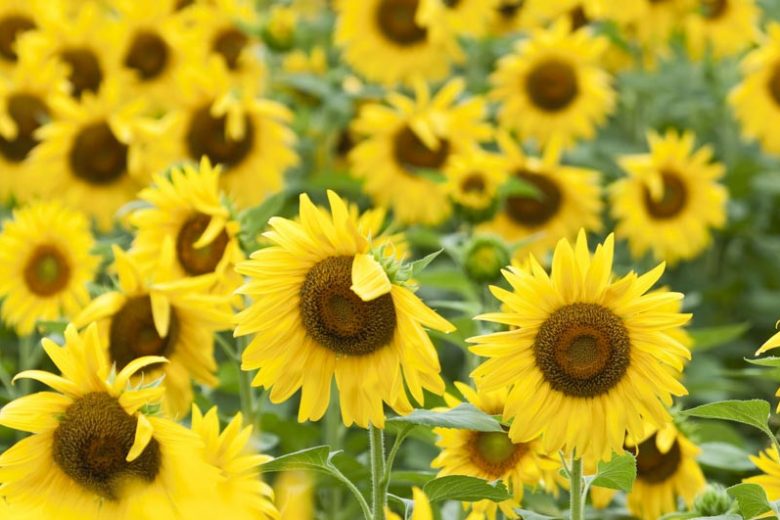
Sunflower plants, cherished for their vibrant, large blooms, are a symbol of summer and happiness. Their distinct appearance, with a large central disc surrounded by bright petals, typically yellow, makes them easily recognizable. These flowers not only add aesthetic value to gardens but are also culturally significant in many societies, symbolizing positivity, strength, and admiration. Easy to grow, there is certainly one sunflower variety that is perfect for your garden or pots.
Native: Originally native to North America, sunflowers have a rich history intertwined with indigenous cultures, where they were cultivated for their seeds, oil, and medicinal properties. They have since spread worldwide.
Plant Family and Species: Sunflowers belong to the family Asteraceae and the genus Helianthus. The most common species in gardens is Helianthus annuus, which is referred to as the common sunflower.
Plant Type: Sunflowers are predominantly annual plants, completing their life cycle in one season. However, there are also perennial varieties. They are primarily known for their use in ornamental gardens and agricultural settings for seed production.
Growth Habit / Size: Sunflowers exhibit a range of growth habits, from dwarf varieties a few feet in height to towering giants that can grow over 10 feet (3 m). Some grow with a single, tall stem topped with a large flower, while others are branching, producing multiple flowers on several stems.
Flowers: The flowers are perhaps the most distinctive feature, known for their large heads and bright, sun-like appearance. They usually have a central disc surrounded by petals (ray florets). Most sunflowers bloom in summer and early fall. They are known for being heliotropic in their early stages, meaning young sunflowers will follow the sun across the sky.
Foliage: Sunflower leaves are typically large, heart-shaped, and rough in texture. They have a deep green color, providing a lush backdrop for the bright flower heads.
Pollinators: Sunflowers are excellent for attracting pollinators. Bees and butterflies are particularly drawn to sunflowers, making them a great choice for pollinator-friendly gardens.
Toxicity: Generally, sunflowers are not toxic and are safe to grow in gardens frequented by pets and children. However, some individuals may have allergies to sunflower pollen.
Growing sunflowers in your garden is not just about adding a splash of vibrant color; these cheerful blooms offer a multitude of benefits that extend beyond their aesthetic appeal.
Helianthus annuus ‘Sunny Smile’ is a dwarf sunflower variety, ideal for containers and small spaces. It blooms with cheerful, bright yellow flowers and dark centers, growing up to 15-20 inches tall (40-50 cm). This sun-loving plant is perfect for adding a splash of color to patios and gardens, blooming throughout summer.
| Hardiness | 2 - 11 |
|---|---|
| Plant type | Annuals |
| Exposure | Full Sun |
| Season of Interest |
Summer (Mid, Late) |
| Height |
1' - 2' (30cm - 60cm) |
| Spread |
1' - 2' (30cm - 60cm) |
The Helianthus annuus ‘Teddy Bear’, a reliable and high-performing annual, showcases fluffy, double golden-yellow flowers resembling pompoms, spanning up to 5 inches (12 cm). Ideal for sunny borders or containers, this easy-to-grow sunflower excels as a cut flower, adding a burst of cheer to any setting. It blooms 60-75 days after planting.
| Hardiness | 2 - 11 |
|---|---|
| Plant type | Annuals |
| Exposure | Full Sun |
| Season of Interest |
Summer (Mid, Late) |
| Height |
2' - 3' (60cm - 90cm) |
| Spread |
1' - 2' (30cm - 60cm) |
Helianthus annuus ‘Firecracker’ (Common Sunflower) is a semi-dwarf, well-branched annual boasting a profusion of large, bicolor blossoms, 4-6 in. (10-15 cm), adorned with bright golden and orange petals surrounding chocolate brown centers. Blooming as early as 50-60 days after planting, this compact, pollen-free sunflower is perfect for containers or a sunny border.
| Hardiness | 2 - 11 |
|---|---|
| Plant type | Annuals |
| Exposure | Full Sun |
| Season of Interest |
Summer (Mid, Late) |
| Height |
2' - 3' (60cm - 90cm) |
| Spread |
8" - 1' (20cm - 30cm) |
Helianthus annuus ‘Ring of Fire’, a striking sunflower variety, with large flowers, 5 inches across (12 cm), boasting a unique pattern of fiery red and gold petals surrounding a dark center. Ideal for adding bold contrast to gardens, it reaches maturity in about 70-80 days and is a magnet for pollinators.
| Hardiness | 2 - 11 |
|---|---|
| Plant type | Annuals |
| Exposure | Full Sun |
| Season of Interest |
Summer (Mid, Late) |
| Height |
4' - 5' (120cm - 150cm) |
| Spread |
2' - 3' (60cm - 90cm) |
Helianthus annuus ‘Floristan’ is a bicolored sunflower with reddish-brown and golden-yellow petals surrounding a chocolate brown center. This well-branched annual blooms all season, making it ideal for sunny borders or containers. Perfect for cut flower arrangements, ‘Floristan’ adds vibrant, long-lasting color to any garden or bouquet. It blooms 66-75 days after planting.
| Hardiness | 2 - 11 |
|---|---|
| Plant type | Annuals |
| Exposure | Full Sun |
| Season of Interest |
Summer (Early, Mid, Late) |
| Height |
3' - 5' (90cm - 150cm) |
| Spread |
1' - 2' (30cm - 60cm) |
Helianthus annuus ‘Sunrich Gold’ is a striking sunflower variety boasting large, 5-6 inches wide (12-15 cm), bright golden-yellow flowers adorned with a dark brown center. It reaches 4-5 feet in height (120-150 cm) and is perfect for cut flower arrangements due to its long-lasting, pollen-free blooms. It blooms as early as 60 to 65 days after planting.
| Hardiness | 2 - 11 |
|---|---|
| Plant type | Annuals |
| Exposure | Full Sun |
| Season of Interest |
Summer (Mid, Late) |
| Height |
4' - 5' (120cm - 150cm) |
| Spread |
1' - 2' (30cm - 60cm) |
Helianthus annuus ‘Sunrich Summer Provence’ is a striking sunflower variety boasting large, 5-6 inches wide (12-15 cm), bright golden-yellow flowers adorned with a dark brown center. It reaches 4-5 feet in height (120-150 cm) and is perfect for cut flower arrangements due to its long-lasting, pollen-free blooms. It blooms as early as 60 to 65 days after planting.
| Hardiness | 2 - 11 |
|---|---|
| Plant type | Annuals |
| Exposure | Full Sun |
| Season of Interest |
Summer (Mid, Late) |
| Height |
4' - 5' (120cm - 150cm) |
| Spread |
1' - 2' (30cm - 60cm) |
Helianthus annuus ‘Valentine’, a splendid sunflower variety, features large, primrose yellow blooms with a dark chocolate center, reaching up to 7 inches (17 cm). This fast-growing, well-branched annual has broad, rough leaves and attracts bees, butterflies, and birds. Ideal for sunny borders or as stunning cut flowers, it’s easy to grow and adds a sensational touch to any garden. Blooms 75-85 days after planting.
| Hardiness | 2 - 11 |
|---|---|
| Plant type | Annuals |
| Exposure | Full Sun |
| Season of Interest |
Summer (Mid, Late) |
| Height |
4' - 5' (120cm - 150cm) |
| Spread |
1' - 2' (30cm - 60cm) |
Helianthus annuus ‘Gypsy Charmer’ is a vibrant, multicolored sunflower variety, boasting large blossoms up to 6-8 inches across (15-20 cm), with a dazzling mix of brilliant yellow, rosy-red, and lemon yellow petals. This fast-growing, well-branched annual is perfect for sunny borders and makes remarkable cut flowers. Easy to grow, it adds a spectacular rainbow of colors to any garden. Blooms as early as 45-50 days after planting.
| Hardiness | 2 - 11 |
|---|---|
| Plant type | Annuals |
| Exposure | Full Sun |
| Season of Interest |
Summer (Mid, Late) |
| Height |
4' - 6' (120cm - 180cm) |
| Spread |
1' - 2' (30cm - 60cm) |
Helianthus annuus ‘Autumn Beauty’ is a vibrant sunflower variety showcasing a mix of red, orange, and yellow petals. Reaching 5-6 feet tall, it blooms in late summer to early fall, attracting bees, butterflies, and birds. Ideal for garden backdrops and ornamental displays, it also provides edible seeds. Blooms 75-85 days after planting.
| Hardiness | 2 - 11 |
|---|---|
| Plant type | Annuals |
| Exposure | Full Sun |
| Season of Interest |
Summer (Mid, Late) |
| Height |
5' - 6' (150cm - 180cm) |
| Spread |
1' - 2' (30cm - 60cm) |
Helianthus annuus ‘Claret’ is renowned for its reliability and impressive garden performance, featuring fast growth and well-branched structure. It showcases large, wine-red flowers, up to 6 inches across (15 cm), with deep red-brown petals encircling a nearly black center. Edible seeds from this sunflower are perfect for snacks and baking. Ideal for sunny borders and cut flower arrangements, it blooms 80-100 days after planting, adding a touch of elegance to any garden.
| Hardiness | 2 - 11 |
|---|---|
| Plant type | Annuals |
| Exposure | Full Sun |
| Season of Interest |
Summer (Mid, Late) |
| Height |
5' - 6' (150cm - 180cm) |
| Spread |
1' - 2' (30cm - 60cm) |
Helianthus annuus ‘Giant Sungold’ stands out in the garden with its fast-growing, well-branched form and stunning, brilliant blooms. This annual produces enormous, fluffy, fully-double golden-yellow flowers resembling pompoms, up to 6-10 inches (15-25 cm) across. Easy to grow and friendly in appearance, it’s perfect for sunny borders and makes outstanding cut flowers. Expect blooms 85-100 days after planting, adding a sensational, cheerful touch to any setting.
| Hardiness | 2 - 11 |
|---|---|
| Plant type | Annuals |
| Exposure | Full Sun |
| Season of Interest |
Summer (Mid, Late) Fall |
| Height |
5' - 6' (150cm - 180cm) |
| Spread |
2' - 3' (60cm - 90cm) |
Helianthus annuus ‘Goldy’, a captivating common sunflower, delights with its large, fully-double, golden-yellow blooms, up to 7 inches (17 cm), creating a lush, vibrant display. These flowers, resembling cheerful pompoms, add a burst of sunshine to any garden. Ideal for sunny spots, ‘Goldy’ is perfect for borders and makes an excellent choice for stunning cut flower arrangements. Blooms as early as 45-50 days after planting.
| Hardiness | 2 - 11 |
|---|---|
| Plant type | Annuals |
| Exposure | Full Sun |
| Season of Interest |
Summer (Mid, Late) Fall |
| Height |
5' - 6' (150cm - 180cm) |
| Spread |
1' - 2' (30cm - 60cm) |
Helianthus annuus ‘Soraya,’ the Common Sunflower, is a stunning award-winning annual. Its large, 6-inch (15 cm) bright golden-orange blossoms with chocolate brown centers are a favorite of bees, butterflies, and birds. Easy to grow, self-supporting, and perfect for sunny borders or cut arrangements, ‘Soraya’ is a vibrant addition to any garden. Blooms 85-95 days after planting.
| Hardiness | 2 - 11 |
|---|---|
| Plant type | Annuals |
| Exposure | Full Sun |
| Season of Interest |
Summer (Mid, Late) |
| Height |
5' - 6' (150cm - 180cm) |
| Spread |
1' - 2' (30cm - 60cm) |
Helianthus annuus ‘Strawberry Blonde’, a lively and fast-growing sunflower variety, features unique multicolored blossoms combining lemon, rose, and pink hues, reaching up to 6 inches wide. With oblong to lanceolate leaves, this annual blooms as early as 55-65 days after planting. Pollen-free and easy to grow, it’s perfect for sunny borders and excels as a colorful, beautiful choice for cut flower arrangements.
| Hardiness | 2 - 11 |
|---|---|
| Plant type | Annuals |
| Exposure | Full Sun |
| Season of Interest |
Summer (Mid, Late) |
| Height |
5' - 6' (150cm - 180cm) |
| Spread | 2' (60cm) |
Helianthus annuus ‘Taiyo’, a stunning Japanese sunflower variety, is a fast-growing, well-branched annual, adorned with large, dark green, pointed leaves. It blooms in summer, showcasing large, single flowers up to 10 inches (25 cm) across, featuring brilliant yellow petals around a massive dark chocolate center. ‘Taiyo’ is easy to grow and perfect for sunny borders. It makes magnificent cut flowers, blooming in just 55-70 days after planting, adding dramatic beauty to any garden.
| Hardiness | 2 - 11 |
|---|---|
| Plant type | Annuals |
| Exposure | Full Sun |
| Season of Interest |
Summer (Mid, Late) |
| Height |
5' - 6' (150cm - 180cm) |
| Spread |
1' - 2' (30cm - 60cm) |
Helianthus annuus ‘Velvet Queen’ is a stunning sunflower variety, notable for its deep maroon-red petals and chocolate brown centers. Reaching 5-6 feet in height, it blooms from mid-summer to fall, attracting bees, butterflies, and birds. Perfect for ornamental gardens, it thrives in full sun and is drought-tolerant. Blooms 60-70 days after planting.
| Hardiness | 2 - 11 |
|---|---|
| Plant type | Annuals |
| Exposure | Full Sun |
| Season of Interest |
Summer (Mid, Late) |
| Height |
5' - 6' (150cm - 180cm) |
| Spread |
1' - 2' (30cm - 60cm) |
Helianthus annuus ‘Vincent’s Choice’, a robust and showy common sunflower, stands out with its abundance of large, bright golden-yellow blossoms. Each flower, adorned with an extra ring of rounded petals, features a chocolate brown center. These pollen-free, upward-facing blooms thrive on strong stems, blooming as early as 50-60 days after planting. Uniquely less sensitive to day length, ‘Vincent’s Choice’ allows for an extended growing season, producing high-quality flowers from early to late season. Ideal for containers or sunny borders, it’s a perfect choice for continuous garden splendor.
| Hardiness | 2 - 11 |
|---|---|
| Plant type | Annuals |
| Exposure | Full Sun |
| Season of Interest |
Summer (Early, Mid, Late) |
| Height |
5' - 6' (150cm - 180cm) |
| Spread |
10" - 1' (25cm - 30cm) |
Helianthus annuus ProCut® White Nite is a distinctive variety, renowned for its elegant, creamy white petals and contrasting dark center. Ideal for cut flower arrangements due to its pollen-free nature, it grows to about 5-6 feet tall, adding a touch of sophistication to gardens and bouquets with its unique coloring. It blooms as early as 50 to 70 days after planting.
| Hardiness | 2 - 11 |
|---|---|
| Plant type | Annuals |
| Exposure | Full Sun |
| Season of Interest |
Summer (Mid, Late) |
| Height |
5' - 6' (150cm - 180cm) |
| Spread |
1' - 2' (30cm - 60cm) |
Helianthus annuus ProCut® Red, part of the renowned ProCut® series, is celebrated for its striking deep red petals and dark central disc. Ideal as a cut flower due to its pollen-free nature, it adds dramatic color to gardens and floral arrangements. It blooms as early as 50 to 60 days after planting.
| Hardiness | 2 - 11 |
|---|---|
| Plant type | Annuals |
| Exposure | Full Sun |
| Season of Interest |
Summer (Mid, Late) |
| Height |
5' - 6' (150cm - 180cm) |
| Spread |
1' - 2' (30cm - 60cm) |
Helianthus annuus ‘Evening Sun,’ the Common Sunflower, is a fast-growing annual with stunning, sunset-like blossoms. Its large 8-10 inch (20-25 cm) flowers feature warm copper to mahogany petals and a dark chocolate center. Easy to grow and perfect for sunny borders or cut arrangements, it blooms 65-75 days after planting, adding vibrant color to your garden.
| Hardiness | 2 - 11 |
|---|---|
| Plant type | Annuals |
| Exposure | Full Sun |
| Season of Interest |
Summer (Mid, Late) |
| Height |
6' - 8' (180cm - 240cm) |
| Spread |
2' - 3' (60cm - 90cm) |
Helianthus annuus ‘Arikara’, a majestic common sunflower variety, rapidly grows into a towering presence with broad, rough leaves. Named after the Native American tribe that cultivated it, this variety blooms in summer, featuring impressively large, single or multi-headed orange or yellow flowers, each up to 16 inches (40 cm) wide, with a dark central disk. ‘Arikara’ is ideal for sunny borders and is renowned for its nutritious edible seeds. Expect blooms within 80-100 days after planting.
| Hardiness | 2 - 11 |
|---|---|
| Plant type | Annuals |
| Exposure | Full Sun |
| Season of Interest |
Summer (Mid, Late) |
| Height |
8' - 10' (240cm - 3m) |
| Spread |
2' - 3' (60cm - 90cm) |
Helianthus annuus ‘Mammoth Grey Stripe’, a giant sunflower variety, is a striking annual that reaches impressive heights. It boasts enormous flowers, 8-12 inches across (20-30 cm), with brilliant golden-yellow petals encircling a dark chocolate center. Perched atop sturdy stalks, these impressive blooms make a bold statement in any landscape. Easy to grow, perfect for sunny borders, and cherished by gardeners for its plump, roastable seeds. Blooms can be expected 90-100 days after planting.
| Hardiness | 2 - 11 |
|---|---|
| Plant type | Annuals |
| Exposure | Full Sun |
| Season of Interest |
Summer (Mid, Late) |
| Height |
8' - 12' (240cm - 3.7m) |
| Spread |
2' - 4' (60cm - 120cm) |
Helianthus annuus ‘Russian Mammoth’, a colossal sunflower variety, is a towering annual known for its massive flowers, spanning 8-14 inches 20-35 cm), with vibrant golden-yellow petals around a dark chocolate center. Supported by sturdy stalks, these grand flower heads create a stunning impact in any landscape. Easy to cultivate and ideal for sunny borders, ‘Russian Mammoth’ is also popular for its plump seeds, perfect for roasting. Blooms typically appear 75-90 days after planting, offering both beauty and bounty.
| Hardiness | 2 - 11 |
|---|---|
| Plant type | Annuals |
| Exposure | Full Sun |
| Season of Interest |
Summer (Mid, Late) |
| Height |
9' - 12' (270cm - 3.7m) |
| Spread |
2' - 4' (60cm - 120cm) |
Helianthus tuberosus, known as Jerusalem Artichoke, is a striking perennial showcasing large, bright flowers with 10-20 yellow rays encircling a darker center. Blooming from mid-summer to early fall, its robust stems attract birds feasting on the seeds. Perfect for naturalized areas, this plant is treasured for both its showy sunflowers and edible tubers, readily spreading to create appealing colonies.
| Hardiness | 3 - 9 |
|---|---|
| Plant type | Perennials |
| Exposure | Full Sun, Partial Sun |
| Season of Interest |
Summer (Late) Fall |
| Height |
6' - 10' (180cm - 3m) |
| Spread |
3' - 5' (90cm - 150cm) |
Helianthus decapetalus, a delightful perennial woodland sunflower, features dark green, serrated leaves and bright yellow flowers, each 3 inches (7 cm) across, blooming atop tall stems from early summer to late fall. Attracting bees, butterflies, and birds, it’s perfect for partly shaded borders and naturalized areas, offering vibrant summer and fall colors.
| Hardiness | 4 - 9 |
|---|---|
| Plant type | Perennials |
| Exposure | Partial Sun |
| Season of Interest |
Summer (Early, Mid, Late) Fall |
| Height |
3' - 5' (90cm - 150cm) |
| Spread |
2' - 3' (60cm - 90cm) |
Helianthus pauciflorus, known as Stiff Sunflower, is an upright perennial with rigid, hairy stems and grayish-green leaves. It blooms profusely from early summer to fall, showcasing brilliant yellow flowers, 2-4 inches (5-10 cm) across, with bright rays and a purplish-brown center. This hardy plant, favored by bees, butterflies, and birds, can spread to form colonies, thriving in prairies, roadsides, and open woods. Ideal for large perennial gardens and wildflower meadows, it requires space to flourish.
| Hardiness | 3 - 7 |
|---|---|
| Plant type | Perennials |
| Exposure | Full Sun |
| Season of Interest |
Summer (Early, Mid, Late) Fall |
| Height |
2' - 6' (60cm - 180cm) |
| Spread |
1' - 2' (30cm - 60cm) |
Helianthus nuttallii, Nuttall’s Sunflower, is a late-blooming showy perennial with tall, sturdy stems, displaying golden-yellow flowers, 3-4 inches across, from fall to frost. An essential nectar source for monarch butterflies and other pollinators, it also attracts birds like Goldfinches for its seeds. Its leaves are lanceolate and rough-haired beneath. Thriving in moist prairies and meadows, it spreads easily by rhizomes. Ideal for native gardens, rain gardens, and waterside plantings, it offers a profusion of late-season blooms.
| Hardiness | 5 - 9 |
|---|---|
| Plant type | Perennials |
| Exposure | Full Sun |
| Season of Interest |
Fall |
| Height |
3' - 8' (90cm - 240cm) |
Helianthus angustifolius, known as Swamp Sunflower, is the last sunflower to bloom, forming a clump of tall, sturdy, green to purplish stems. It showcases a profusion of golden-yellow flowers, 2-3 inches across, from fall to frost, each with narrow, pointed rays around a purplish-brown disk. A vital nectar source for monarch butterflies and other pollinators, its seeds attract songbirds. With narrow, willowy, hairy leaves, it grows moderately from a colonizing crown. Perfect for native gardens, rain gardens, and waterside settings, it promises late-season blooms when most others have faded.
| Hardiness | 5 - 10 |
|---|---|
| Plant type | Perennials |
| Exposure | Full Sun, Partial Sun |
| Season of Interest |
Fall |
| Height |
5' - 8' (150cm - 240cm) |
| Spread |
2' - 4' (60cm - 120cm) |
Helianthus debilis, the Beach Sunflower, is a fast-growing perennial groundcover creating a lush mound of semi-evergreen, dark green leaves. Its small, sunflower-like flowers, 3 inches (7 cm) across, bloom from spring to fall, continuously in frost-free areas. It spreads quickly by runners, making an excellent groundcover. Resilient to salt and drought, it’s ideal for beachside locations and mass plantings, and it helps stabilize dunes and sandy soils. In colder climates, it’s a prolific self-seeder, reappearing each spring. Florists also cherish its charming cut flowers.
| Hardiness | 8 - 11 |
|---|---|
| Plant type | Perennials |
| Exposure | Full Sun |
| Season of Interest |
Spring (Early, Mid, Late) Summer (Early, Mid, Late) Fall Winter |
| Height |
1' - 2' (30cm - 60cm) |
| Spread |
2' - 4' (60cm - 120cm) |
Helianthus divaricatus, the Woodland Sunflower, is a perennial with bright yellow flowers, each with 8-15 rays and a darker center disk. Blooming from early summer to fall, they attract pollinators and provide seeds for birds and mammals. Ideal for partly shaded borders and naturalized areas, it adds summer and fall color.
| Hardiness | 3 - 8 |
|---|---|
| Plant type | Perennials |
| Exposure | Partial Sun |
| Season of Interest |
Summer (Early, Mid, Late) Fall |
| Height |
2' - 6' (60cm - 180cm) |
| Spread |
1' - 3' (30cm - 90cm) |
Helianthus salicifolius, the Willow-Leaved Sunflower, is a robust perennial with slender, willow-like leaves and upright stems. Blooming from late summer to fall, it features brilliant yellow daisies with dark centers, each about 3 inches wide. Attractive to butterflies and pollinators, it’s ideal for traditional borders and provides excellent cut flowers, renowned for its elegant foliage and plentiful late-season blooms.
| Hardiness | 4 - 9 |
|---|---|
| Plant type | Perennials |
| Exposure | Full Sun |
| Season of Interest |
Summer (Late) Fall |
| Height |
8' - 10' (240cm - 3m) |
| Spread |
1' - 3' (30cm - 90cm) |
Helianthus mollis, known as Ashy Sunflower, is an upright perennial notable for its pubescent leaves and stems, giving them a distinctive ashy-gray appearance. From early summer to early fall, it blooms profusely with 4-inch (10 cm) wide yellow flowers, each adorned with 15-30 yellow rays and a yellow center disk. These blossoms attract birds, who feast on the seeds directly from the seedheads. Spreading by rhizomes and self-seeding, Ashy Sunflower forms colonies, perfect for adding enduring summer color to naturalized areas.
| Hardiness | 4 - 9 |
|---|---|
| Plant type | Perennials |
| Exposure | Full Sun |
| Season of Interest |
Summer (Early, Mid, Late) Fall |
| Height |
2' - 4' (60cm - 120cm) |
| Spread |
1' - 3' (30cm - 90cm) |
Helianthus grosseserratus, the Sawtooth Sunflower, is a striking perennial featuring tall, sturdy, reddish, or reddish-purple stems that branch in the upper half. From late summer to fall, it’s crowned with a profusion of 4-inch (10 cm) brilliant flowers in loose clusters. Attractive to honeybees and bumblebees, its seeds are a favorite of gamebirds and songbirds. Contrary to its name, its lance-shaped leaves are often toothless or slightly serrated. Rapidly spreading via rhizomes, it’s ideal for naturalized areas, forming impressive colonies.
| Hardiness | 3 - 8 |
|---|---|
| Plant type | Perennials |
| Exposure | Full Sun |
| Season of Interest |
Summer (Late) Fall |
| Height |
5' - 10' (150cm - 3m) |
| Spread |
2' - 3' (60cm - 90cm) |
Helianthus occidentalis, known as Western Sunflower, is a showy perennial suited for dry soils. It forms a rosette of large, ovate, medium green basal leaves. From mid-summer to fall, it boasts an extended blooming period of elegant, star-like 2-inch (5 cm) flowers on upright, almost naked stems. Each stalk can hold 1-12 flowerheads, typically in a panicle. The flowers attract birds, who feast on the seeds. Its prominent basal leaves and nearly naked flowering stalks give it a distinct look among sunflowers. Well-behaved and erosion-controlling, it’s perfect for sunny borders.
| Hardiness | 3 - 9 |
|---|---|
| Plant type | Perennials |
| Exposure | Full Sun |
| Season of Interest |
Summer (Mid, Late) Fall |
| Height |
2' - 4' (60cm - 120cm) |
| Spread |
1' - 2' (30cm - 60cm) |
Helianthus argophyllus, the Silverleaf Sunflower, is a majestic, tall, multi-branching annual celebrated for its magnificent silvery felted foliage. It produces a bounty of sunny yellow flowers, each 4 inches (10 cm) wide with a chocolate center, blooming profusely from mid-summer to the first frost. One plant can yield 1-5 flower heads, attracting goldfinches who feast on the seeds. This wild sunflower is easy to grow, reseeds freely, and thrives in warm weather, adding a striking presence to any garden setting.
| Hardiness | 2 - 11 |
|---|---|
| Plant type | Annuals |
| Exposure | Full Sun |
| Season of Interest |
Summer (Mid, Late) Fall |
| Height |
4' - 6' (120cm - 180cm) |
| Spread |
1' - 2' (30cm - 60cm) |
Helianthus ‘Happy Days’, a dwarf perennial sunflower, creates an upright mound of dark green leaves. From midsummer to early fall, it blooms with large, brilliant, 4-inch (10 cm) double flowers featuring short golden petals and a prominent, anemone-style yellow center on purple stems. Attracting butterflies and hummingbirds, it’s ideal for beds and borders and excellent for cutting, adding vibrant charm to any garden space.
| Hardiness | 5 - 9 |
|---|---|
| Plant type | Perennials |
| Exposure | Full Sun |
| Season of Interest |
Summer (Mid, Late) Fall |
| Height |
1' - 2' (30cm - 60cm) |
| Spread |
1' - 2' (30cm - 60cm) |
Helianthus salicifolius ‘Low Down’, the Willow-Leaved Sunflower, is a dwarf perennial known for its abundant flowering. It forms a compact mound with upright stems and narrow leaves, crowned by large sprays of brilliant yellow daisies, each 2.5 inches (6 cm) across, featuring a dark chocolate center. Blooming profusely from late summer to mid-fall, its cheerful blossoms nearly conceal the foliage. Celebrated for its handsome leaves and prolific late-season blooms, this well-behaved sunflower is an excellent choice for the front of any garden border.
| Hardiness | 5 - 9 |
|---|---|
| Plant type | Perennials |
| Exposure | Full Sun |
| Season of Interest |
Summer (Late) Fall |
| Height |
9" - 1' (23cm - 30cm) |
| Spread |
1' - 2' (30cm - 60cm) |
Helianthus salicifolius ‘First Light’, a Willow-Leaved Sunflower, is a vigorous, floriferous perennial. It forms a compact clump of upright stems with narrow, fuzzy leaves, topped by large sprays of brilliant yellow daisies, 3 inches (7 cm) across, each adorned with a dark chocolate center. Blooming abundantly from late summer to mid-fall, its cheerful blossoms almost conceal the foliage. Valued for its handsome leaves and profuse late-season flowering, this well-behaved sunflower is a splendid addition to any landscape and is also excellent for cutting.
| Hardiness | 5 - 9 |
|---|---|
| Plant type | Perennials |
| Exposure | Full Sun |
| Season of Interest |
Summer (Late) Fall |
| Height |
3' - 4' (90cm - 120cm) |
| Spread |
3' - 4' (90cm - 120cm) |
There are hundreds of sunflower varieties to pick from. Choosing the best for your garden depends on your space, sunlight, and style preferences. For small areas or containers, consider compact varieties. If you have ample space, go for taller types for a dramatic effect. Opt for sun-loving, well-draining soil locations, and decide if you prefer traditional yellow blooms or unique colors like red or white. Consider your goal—whether it’s for stunning visuals, attracting wildlife, or harvesting seeds—and select a variety that aligns with your gardening aspirations.
Selecting the right sunflower for your space is key: go for towering giants like ‘Russian Mammoth’ for garden drama, or opt for compact varieties like ‘Teddy Bear’ for pots. Consider bloom size, plant height, and color to harmonize with your garden’s theme and maximize the visual impact of these sunny blooms.
Growing sunflowers brings a multitude of benefits: they add striking beauty to gardens, attract essential pollinators like bees and butterflies, provide food for birds, improve soil health through deep rooting, and are easy to grow, making them a perfect choice for both novice and experienced gardeners.
Cherished for their beauty, Sunflowers (Helianthus) are striking ornamental annuals or perennial plants grown for their colorful summer and fall blooms. Fast-growing, they can reward you with glamorous blooms between 55 and 100 days after planting. Here are some basic rules that need to be followed to enjoy their splendid flowers.
Discover the top palm tree varieties ideal for home gardeners. From towering majesties to compact beauties, these palms offer a range of sizes and styles, perfect for enhancing any garden. Embrace their tropical allure and transform your outdoor space into an exotic paradise with these perfect picks.
Perennial flowers and plants are the heart of a vibrant garden, returning each year with minimal care. Offering a diverse array of colors, textures, and heights, they create a dynamic and evolving landscape. Selecting the right perennials can transform your garden into a stunning display of enduring beauty season after season.
Summer bulbs transform gardens and pots with dazzling colors and scents. From the vibrant hues of Dahlias to the elegant Gladiolus and exotic Lilies, they promise a spectacular display, ensuring your garden remains a blooming paradise from late spring to early autumn, captivating both eyes and senses.
Native shrubs for shade offer a natural, low-maintenance solution to beautify shaded garden areas. They thrive with minimal care, support local wildlife, and maintain ecological balance. Ideal for under tree canopies or north-facing gardens, these shrubs add color, texture, and year-round interest while fostering a healthy, biodiverse landscape.
Perennial plants perfect for shade gardens include Hostas, with their lush foliage, Hellebores for winter blooms, Astilbe with feathery flower plumes, delicate Bleeding Hearts, and the ground-covering Epimedium. Ferns add a textural contrast, while Solomon’s Seal and Toad Lilies bring unique beauty to tranquil, shaded retreats.
Discover the enchanting world of ferns, perfect for revitalizing your home and garden. From the elegant Boston Fern to the unique Staghorn, these vibrant varieties bring life to any setting. Ideal for shady garden spots or indoor corners, ferns like Maidenhair and Bird’s Nest add lush greenery and a touch of tranquility, effortlessly transforming your living spaces into serene green havens.
Spring wildflowers transform gardens into natural havens, bursting with vibrant hues and textures. Planting Bluebonnets, Indian Paintbrushes, and Trilliums creates a tapestry of color, while Wild Lupine and Columbine add delicate charm. Bloodroot, Dutchman’s Breeches, and Virginia Bluebells introduce whimsy, enriching the landscape with their unique beauty and inviting a chorus of pollinators to celebrate the season’s awakening.
Here’s a list of 40 famous dahlia varieties, noted for their unique beauty, color, form, and popularity among gardeners and floral enthusiasts
AlessandroZocc / Shutterstock





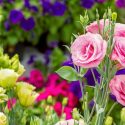
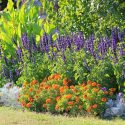
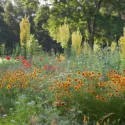
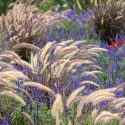
Create a membership account to save your garden designs and to view them on any device.
Becoming a contributing member of Gardenia is easy and can be done in just a few minutes. If you provide us with your name, email address and the payment of a modest $25 annual membership fee, you will become a full member, enabling you to design and save up to 25 of your garden design ideas.
Join now and start creating your dream garden!
Create a membership account to save your garden designs and to view them on any device.
Becoming a contributing member of Gardenia is easy and can be done in just a few minutes. If you provide us with your name, email address and the payment of a modest $25 annual membership fee, you will become a full member, enabling you to design and save up to 25 of your garden design ideas.
Join now and start creating your dream garden!